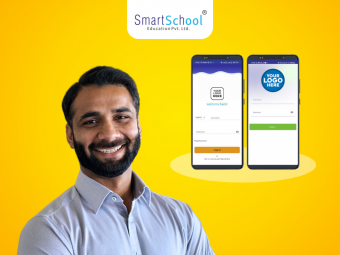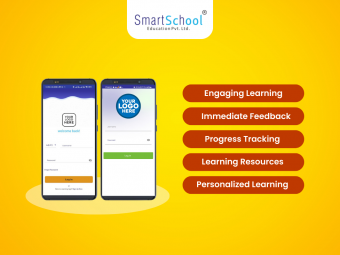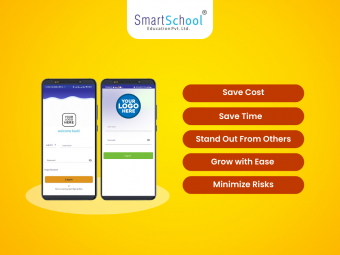In today's digital era, education apps have revolutionized the way K-12 students learn and engage with educational content. Developing an education app specifically designed for this age group requires careful planning and consideration.
11 Easy Steps To Create an Education App
In this blog, we will provide a detailed step-by-step guide to help you develop an effective education app for K-12 students, with illustrative examples to guide you through each stage.
Step 1: Identify the Educational Needs:
Begin by understanding the unique educational needs of K-12 students. Consider the curriculum requirements, subjects, and learning goals specific to this age group. Let's take an example of a science education app that aims to make learning engaging and interactive for K-12 students.
Step 2: Define the App's Objectives:
Clearly define the objectives of your education app. In the case of the science education app, the objective could be to provide comprehensive science lessons, interactive experiments, and quizzes to foster curiosity and deepen understanding.
Step 3: Research Existing Apps:
Conduct thorough research on existing education apps catering to K-12 students. Analyze their features, user experience, and content to identify areas for improvement or unique features you can incorporate into your app. For instance, you may find apps that offer virtual lab simulations or personalized learning paths based on students' proficiency levels.
Step 4: Design the User Interface (UI) and User Experience (UX):
Create an appealing and user-friendly UI/UX design that captures the attention of K-12 students. Consider their age, preferences, and visual engagement. For the science app, you can incorporate colorful visuals, interactive elements, and intuitive navigation to make learning a captivating experience. Utilize wireframing and prototyping tools to visualize the app's flow and functionality.
Step 5: Choose the App Development Approach:
Choose the most suitable app development approach based on your resources and target platforms. Native development ensures optimal performance but requires separate development for iOS and Android. Alternatively, cross-platform frameworks like React Native or Flutter offer code-sharing capabilities, reducing development time and costs.
Step 6: Develop Core Features:
Focus on developing core features aligned with your app's objectives. In the science app example, you could include interactive video lessons, virtual lab experiments, a progress tracker, and a discussion forum for students to collaborate. Ensure seamless functionality and a bug-free experience.
Step 7: Integrate Engaging Content:
Collaborate with educators and subject matter experts to develop engaging educational content. In the science app, include animated videos, hands-on experiments with step-by-step instructions, and interactive quizzes to reinforce learning. Provide content that covers various scientific concepts suitable for different grade levels within K-12.
Step 8: Test and Refine:
Thoroughly test your app for usability, performance, and compatibility across devices. Conduct user testing sessions with K-12 students to gather feedback on user experience and identify areas for improvement. Iteratively refine the app based on user feedback and bug reports.
Step 9: Implement Security and Privacy Measures:
Ensure your app adheres to stringent security and privacy guidelines to protect students' data. Implement robust authentication systems, data encryption, and secure storage practices to maintain user information confidentiality and privacy.
Step 10: Deploy and Market the App:
Prepare your app for deployment by creating developer accounts on relevant app stores, such as the Apple App Store and Google Play Store. Create captivating app descriptions, engaging screenshots, and promotional materials. Develop a comprehensive marketing strategy to reach out to schools, parents, and students, highlighting the app's unique features and benefits.
Step 11: Maintain and Update:
To ensure the long-term success of your education app for K-12 students, it is crucial to prioritise maintenance and regular updates. Continuously monitor user feedback and promptly address reported issues to provide a seamless user experience.
Regularly release updates to enhance the app's features, performance, and security. By actively maintaining and updating your app, you can improve user satisfaction, address evolving needs, and stay ahead of the competition.
Why Create an App When You Can Choose a Whitelabel App for Your Education Company?
When considering developing an education app for your company, it's essential to explore all available options. One alternative to building an app from scratch is to choose a whitelabel app solution. Here are some reasons why opting for a whitelabel app can be advantageous:
1. Cost and Time Efficiency:
Developing a customized app can be a time-consuming and expensive process. By choosing a whitelabel app, you can leverage an existing, pre-built solution tailored for education. This significantly reduces development time and costs associated with app creation.
2. Ready-to-Use Solution:
A whitelabel app is a turnkey solution that comes with a pre-designed interface, features, and functionalities specifically designed for education. You can quickly integrate your branding elements, customize certain aspects, and launch the app without starting from scratch.
3. Reliability and Scalability:
Whitestyle='width:100%;height:auto;'label apps are often developed by experienced app development companies that specialize in the education sector. These solutions are thoroughly tested, ensuring reliability and scalability as your user base grows. You can trust that the app will deliver a stable and seamless experience to your students and teachers.
4. Ongoing Technical Support:
When you choose a whitelabel app, you typically gain access to technical support from the app provider. They can assist with troubleshooting, bug fixes, and updates, allowing you to focus on your core business activities while ensuring the app runs smoothly.
5. Customizability:
Although a whitelabel app comes with predefined features, many providers offer flexibility for customization. You can tailor the app to align with your brand identity, incorporate specific educational content, and even add unique features that differentiate your offering.
6. Time-to-Market Advantage:
Developing an app from scratch can be a lengthy process, delaying your entry into the market. With a whitelabel app, you can quickly launch your education platform, providing immediate access to your target audience. This speed-to-market advantage allows you to start engaging with students and generating revenue sooner.
7. Focus on Core Competencies:
By choosing a whitelabel app, you can focus on your core competencies, such as content creation and educational services. You can leverage the expertise of app development professionals, freeing up your resources to deliver high-quality education experiences.
Ultimately, the decision between creating a custom app or opting for a whitelabel app depends on your specific needs, resources, and strategic objectives.
Get Your Own Education App With SmartSchool’s Whitelabel Edtech App Solution
Get an interactive learning app along with digital content from nursery to class 12th and a powerful teaching app, all white labelled in your own institute’s brand name.
Features Of SmartSchool’s Whitelabel Edtech App Solution
- 50k+ HD Videos - Animated and Anchor Based Videos
- 2 Million+ Learning Resources
- Huge Question Bank Of 1,00,000+ Questions
- 3,000+ Publishers Mapped For Personalized Learning
- 10,000+ Interactive Tools For Revision
- CBSE, ICSE and All Major Indian State Boards
- Bilingual Content - Both In Hindi and English
- Real-Time Tracking of Student Performance
- Monitor Progress and Content Usage Report
- Special Learning Zone for Dyslexia Students
- Real Life Videos and Science Experiments
- Easily Switch Between Offline and Online Content Mode
- Diagrams, Mapwork, History Timelines & Toppers Answers
- HOTs, Previous Year Question Papers & Formulae Master
- Change video speed, Search content and bookmark favourite videos
- Live classes, Fee Tracking, Assignments and Attendance
- WhatsApp, App notifications and Email platform
To Know more, call 8927089270.
Conclusion:
Developing an education app for K-12 students requires a comprehensive and iterative approach. By following the step-by-step guide outlined in this blog and considering the detailed examples provided, you can create a powerful and impactful education app that enhances learning experiences for K-12 students.
Remember to continuously maintain, update, and improve your app to meet the evolving needs of students, educators, and the education landscape as a whole. Empower students with a transformative learning tool that fosters engagement, knowledge retention, and academic success.




Leave your comment